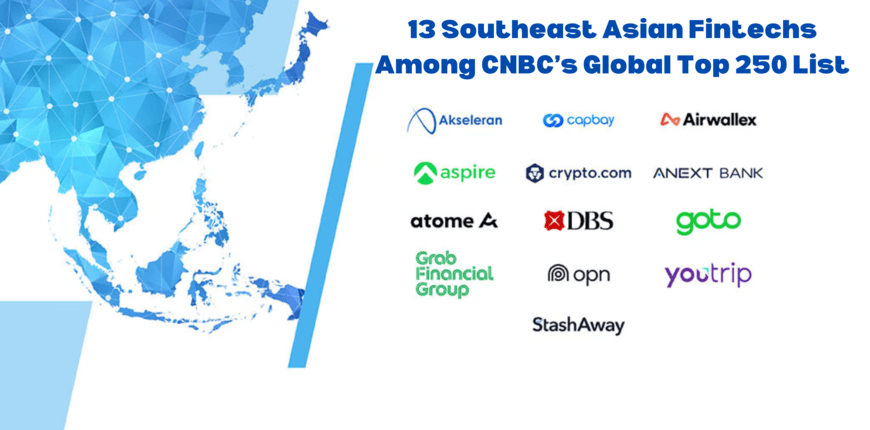Southeast Asia and South Asia: Leading the Fintech Lending Boom
The financial technology (fintech) sector is experiencing unprecedented growth, with 2024 set to mark a major turning point, especially in fintech lending. Known as The Fintech Lending Boom, this surge is fueled by rapid advancements in digital financial services across Southeast and South Asia.
Nov 06 ,2024 - 5 min readAs millions of unbanked or underbanked individuals in these regions gain access to mobile technology, fintech platforms are stepping in to offer innovative lending solutions that address long-standing financial gaps.
This transformation is reshaping how consumers and small businesses engage with credit, providing greater financial inclusion where traditional banking services have been lacking.
1. Introduction to The Fintech Lending Boom in 2024
Fintech lending is experiencing explosive growth in Southeast Asia and South Asia, driven by a combination of several factors. According to a report from Asian Insiders, the smartphone usage rate in the region has surged, facilitating fintech platforms to offer online lending services.
As mentioned in this report, "mobile phone usage in Indonesia surged to 70% by 2024, providing a strong foundation for the fintech lending boom”. The growth of the middle class and the younger generation is also one of the crucial driving forces.
This demographic shift has resulted in increased demand for accessible and flexible financial products, allowing fintech companies to innovate and cater to the diverse financial needs of consumers across these regions.
2. Factors Driving Fintech Growth in Southeast Asia and Asia
Fintech's rapid rise in Southeast and South Asia can be attributed to a combination of technological advancements, financial inclusion efforts, and supportive government policies. These factors have created a thriving ecosystem for fintech lending, payments, and other financial services across the region.
The Role of Mobile Technology in Fintech Lending
One of the primary enablers of fintech growth in both Southeast and South Asia is the widespread adoption of mobile technology. High mobile penetration rates have made it easier for consumers to access financial services, even in rural or underserved areas where traditional banking infrastructure is limited.

- Southeast Asia's Mobile Boom: Southeast Asia, particularly nations like Indonesia, Vietnam, and the Philippines, has also seen significant mobile adoption. This mobile-first approach has allowed fintech companies to scale their services rapidly, offering microloans, peer-to-peer lending, and seamless payment solutions directly through smartphones. With over 400 million internet users across Southeast Asia, mobile technology has become a crucial gateway for fintech growth in the region.
- Mobile Penetration in South Asia: In countries like India and Pakistan, mobile phone usage has skyrocketed, with millions of users gaining access to smartphones. This digital connectivity has opened new opportunities for fintech companies to offer mobile-based financial services, including lending platforms, digital wallets, and payment systems. For instance, India's mobile penetration rate stood at over 80% as of 2023, creating a strong foundation for fintech expansion.
Financial Inclusion and Accessibility
Fintech has played a crucial role in addressing the long-standing issue of financial exclusion. In Southeast and South Asia, a significant portion of the population remains either unbanked or underbanked, meaning they have limited or no access to formal banking services.
Southeast Asia's Fintech Inclusivity
Southeast Asia faces similar challenges in financial inclusion. Indonesia, for example, has a vast unbanked population, with an estimated 47 million people lacking access to financial services. Fintech companies like Akulaku and Kredivo are working to change this by offering credit to those previously excluded from traditional banking systems. In the Philippines, GCash has become a key player in extending financial services to the underbanked, providing easy access to credit, payments, and savings through its mobile app.
Addressing the Unbanked in South Asia
In India, fintech companies have been key players in providing financial services to rural and low-income populations. Platforms such as Lendingkart and Bajaj Finance offer credit solutions to small businesses and individuals who may have difficulty securing loans from traditional banks. Bangladesh, with companies like bKash, has also seen fintech being used to bridge the gap in financial accessibility, offering mobile money services that allow users to save, borrow, and transfer money without needing a bank account.
Government initiatives supporting fintech development (India's Unified Payments Interface, Indonesia’s OJK regulations)
The growth of fintech in Southeast and South Asia is not solely driven by consumer demand but also heavily supported by robust government initiatives within these regions.
India: The Unified Payments Interface (UPI) has played a pivotal role in boosting digital payments and fintech lending across the country. UPI has transformed the way digital transactions are conducted, contributing significantly to fintech’s rapid rise.
Indonesia: The Financial Services Authority (Otoritas Jasa Keuangan - OJK) in Indonesia has introduced several regulations aimed at supporting fintech startups, while ensuring consumer protection through strict oversight. This balance of innovation and regulation has fostered an environment conducive to fintech growth.
Leading Fintech Companies in Southeast Asia

Indonesia: Indonesia is one of Southeast Asia's largest fintech markets. Platforms such as Akulaku and Kredivo have played a significant role in extending credit access to millions of unbanked users. These platforms provide an array of financial services, including consumer loans and installment payment plans, helping bridge the credit gap in underserved areas.
Vietnam and the Philippines: Vietnam and the Philippines are emerging as fintech hubs in Southeast Asia. Companies like MoMo in Vietnam and GCash in the Philippines are experiencing rapid growth. These platforms are helping to modernize their respective financial landscapes by offering a range of services from digital wallets to microloans.
Challenges Facing the Fintech Industry
As fintech continues to reshape financial services in Southeast and South Asia, the sector is also confronted with several challenges that could hinder its growth. Regulatory hurdles, data security concerns, and the need for cross-border collaboration are just a few of the key issues that must be addressed.

Regulatory Barriers to Fintech Growth
Regulatory environments differ significantly across the region, which presents a challenge for fintech companies seeking to expand beyond their domestic markets. Each country has its own financial regulatory framework, often making it difficult for fintech companies to navigate the complexities of compliance.
Varying regulations across countries and compliance issues
In South Asia, India has established a comprehensive set of fintech regulations, particularly around digital payments and peer-to-peer lending, while Bangladesh and Pakistan have been slower to implement similar frameworks. Southeast Asia, meanwhile, is highly fragmented, with countries like Singapore and Malaysia offering clear guidelines for fintech operations, while others, such as Vietnam, are still developing their regulatory infrastructure.
The need for cross-border fintech frameworks
To ensure the scalability of fintech across borders, there is a growing need for regional cooperation. Cross-border payment systems and lending platforms, for instance, could greatly benefit from unified standards and regulatory harmonization. The ASEAN Payment Connectivity Initiative, which promotes cross-border payments within the ASEAN region, is an example of efforts to streamline these processes, but more work is needed to establish comprehensive frameworks that cover the entire fintech landscape.
Cybersecurity and Data Privacy Concerns
With the rapid adoption of fintech services, especially mobile-based lending and payments, consumer data protection has become a critical issue. Fintech platforms handle vast amounts of sensitive financial data, making them prime targets for cyberattacks.
Threats to consumer data in fintech platforms
Cybercriminals often target fintech companies, exploiting vulnerabilities in security protocols. Data breaches and cyberattacks can severely damage consumer trust, leading to reputational harm and financial losses for fintech firms. A 2022 report by McKinsey highlighted that fintech companies in Asia were subject to a rising number of cyberattacks, with many incidents resulting in significant financial theft and compromised user data.
Innovations in cybersecurity for fintech solutions
To combat these threats, fintech companies are increasingly investing in advanced cybersecurity measures. Innovations such as multi-factor authentication, AI-driven fraud detection systems, and blockchain technology are becoming key components of fintech platforms. By leveraging these technologies, companies can ensure more secure transactions and enhance consumer confidence. Notably, firms like Kaspersky and FireEye have been working with fintech startups to provide robust security infrastructure.
Investment Opportunities and Growth Forecast for 2024 and Beyond

Despite the challenges, the fintech lending sector in Southeast and South Asia is expected to experience robust growth, attracting significant investments from venture capital and private equity firms.
Investment Surge in Fintech Lending Platforms
Fintech lending is a hotbed for investment, with venture capital firms increasingly backing startups in the region. Companies offering peer-to-peer lending, microloans, and digital credit solutions have been at the forefront of this trend.
- Major Venture Capital and Private Equity Investments: In 2023, fintech lending startups in Vietnam gained significant attention from investors. While India’s ZestMoney raised $50 million in its Series C funding and Indonesia’s Kredivo secured $100 million led by Victory Park Capital, Vietnamese startups like MoMo and Vay Muon have also attracted substantial funding. MoMo, for instance, has seen a surge in investments, highlighting the confidence in Vietnam's growing fintech landscape. These investments are driving fintech innovation in Vietnam, allowing startups to scale operations and offer new, more efficient lending solutions.
- Key Fintech Lending Startups to Watch in 2024: As we look ahead to 2024, several fintech lending startups in Vietnam are poised for rapid growth. While in India, MoneyTap and Rupeek are expanding their market share, Vietnamese players like MoMo and F88 are also making significant strides by offering instant credit and secured loans. Additionally, platforms such as Vay Muon are addressing the needs of underserved markets, providing small business loans and microcredit solutions tailored to local needs.
Fintech Lending Growth Forecast for 2024-2025
The fintech lending market in Southeast and South Asia is projected to grow substantially over the next few years, driven by increased mobile penetration, government support, and rising demand for digital credit solutions.
- Projected Market Size of Fintech Lending: According to a report from KPMG, the fintech lending market in Vietnam is projected to achieve a compound annual growth rate (CAGR) of around 25% by 2025, potentially reaching a market value of $10 billion. While countries in the region like Indonesia and the Philippines are also set for growth, Vietnam is emerging as a bright spot due to its high demand for digital financial services.
- Future Trends: AI, Blockchain, and Next-Gen Lending Platforms: The future of fintech lending will likely be shaped by advancements in technology, particularly artificial intelligence (AI) and blockchain. AI-driven platforms are already transforming the way credit is assessed, with algorithms providing real-time, accurate credit scoring based on user data. Blockchain, on the other hand, offers the potential to create decentralized lending systems, improving transparency and reducing the risk of fraud. Startups focusing on these technologies are expected to lead the next wave of fintech innovation.
Conclusion
While the fintech lending industry in Southeast and South Asia faces regulatory and security challenges, the outlook for growth remains optimistic. The Fintech Lending Boom is being driven by a combination of technological innovation, supportive government policies, and rising consumer demand, presenting significant opportunities for investors and fintech companies alike.
As we move into 2024 and beyond, the sector is set to expand rapidly, with new players and cutting-edge technologies reshaping the future of finance in the region.
